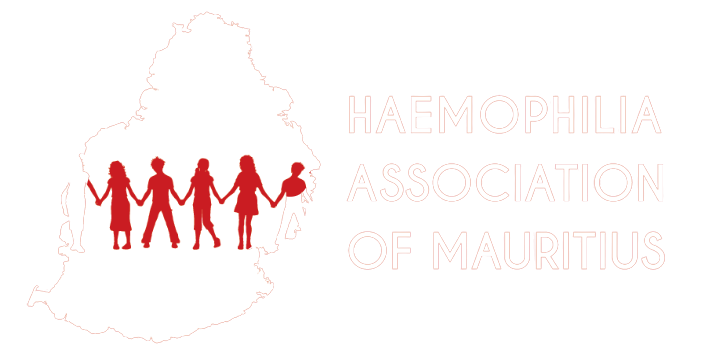
SYMPTOMS AND DIAGNOSIS
The signs of haemophilia A and B are the same:
- Big bruises.
- Bleeding into muscles and joints.
- Spontaneous bleeding (sudden bleeding inside the body for no clear reason).
- Prolonged bleeding after getting a cut, removing a tooth, or having surgery.
- Bleeding for a long time after an accident, especially after an injury to the head.
Bleeding into a joint or muscle causes:
- an ache or “funny feeling”
- swelling
- pain and stiffness
- difficulty using a joint or muscle

Where does bleeding occur?
People with haemophilia can bleed inside or outside the body.
Most bleeding in haemophilia occurs internally, into the joints or muscles. The joints that are most often affected are the knee, ankle, and elbow. The most common muscle bleeds occur in the muscles of the upper arm and forearm, the iliopsoas muscle (the front of the groin area), the thigh, and the calf.
If bleeding occurs many times into the same joint, the joint can become damaged and painful.
Repeated bleeding can cause other health problems like arthritis. This can make it difficult to walk or do simple activities. However, the joints of the hands are not usually affected in haemophilia (unlike some kinds of arthritis).
How is haemophilia diagnosed?
Haemophilia is diagnosed by taking a blood sample and measuring the level of factor activity in the blood. Hemophilia A is diagnosed by testing the level of factor VIII activity. Hemophilia B is diagnosed by measuring the level of factor IX activity.
If the mother is a known carrier of haemophilia, testing can be done before a baby is born. Prenatal diagnosis can be done at 9 to 11 weeks by chorionic villus sampling (CVS) or by fetal blood sampling at a later stage (18 or more weeks).
